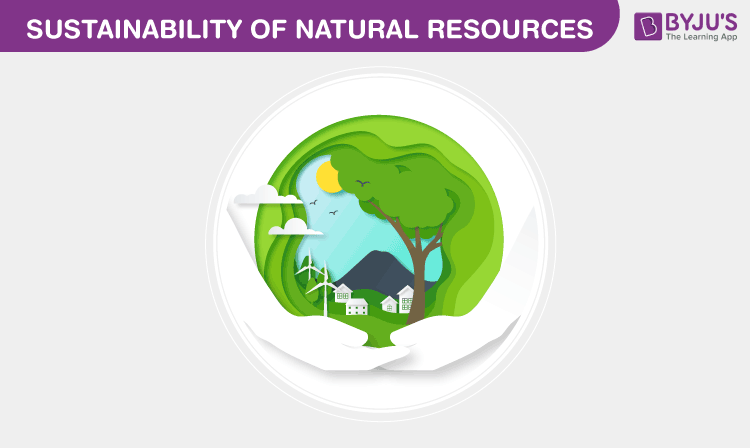Natural resources exist naturally without any human intervention. It can be renewed, replenished easily, and some non-renewable ones, which cannot be replenished.
Resources determine the economy of an area. With judicious utilization of these resources, a country can sustain the resources for future generations. However, looking at the current situations, the indiscriminate use of our modern resources are such that the possibilities of succeeding generations and the developing countries to have access to their fair share is very rare. Furthermore, the consequences are dreadful and the result on the environment will induce severe damages which go beyond the carrying capacity of the environment.

We all have heard numerous tales about the world’s natural ecosystems being under increasing pressure to provide an expanding population with a sustainable supply of food, fibre, fuel, etc. Preservation or management of natural resources is essential for maintaining community sustainability.
Let’s have a closer look at the sustainability of natural resources.
Also Read: Natural Resource Management
Natural Resources
Air and Climate
The human health and ecosystem can be dramatically affected by the declining air quality and change in the climate. The communities can contribute to controlling the sources of air pollution by limiting the use of harmful chemicals in the air.
Energy
Energy happens to be a non-renewable source for power generation which is mainly used for home, workplace, and transportation, causing pollution. The need for energy conservation and the use of renewable fuels providing cost-effective and more sustainable alternatives are the need of the hour.
Water
Water is an important resource which we use for every daily activity like drinking, cooking, cleaning, washing, etc. It is a precious natural resource that is largely getting wasted. To avoid the scarcity of Water both government and people must work together to assure that water is used judiciously and there is adequate water supply to meet future needs.
Biodiversity
Biodiversity plays a vital role in satisfying our need for different types of food, raw materials, fuel, etc. Over 4 billion years ago, the earth was crowded with a variety of species and every single species played a specialized role in maintaining ecological balance. As time passed, more than 80% of the species got extinct. Communities are involved in their preservation by supporting, managing, promoting, protecting and enhancing healthy wildlife by establishing areas like the zoo, sanctuaries, national parks, biosphere reserves, wildlife safaris, and sanctuaries.
Land, Forests, and Ecosystems
An ecosystem consists of both living things and non-living things which interact with each other. Light, air, soil, energy, atmosphere, forests are renewable sources which need to be protected. Communities have to develop judicious land-use practices for both conserving ecosystems and enhance local economies as they maintain the equilibrium in the environment.
Sustainable Utilization of Natural Resources
Sustainable utilization of natural resources is the proper management of natural resources for the benefit of the entire human community. The main aim of sustainable development is to provide resources for present generations without compromising the needs of future generations.
The economy cannot be based on the use of non-renewable resources such as coal, petroleum, because these resources cannot be replenished. A truly sustainable resource does not degrade environmental quality.
Over-exploitation of natural resources leads to the exhaustion of the resources. Therefore, the current resources cannot be used at the same pace as nothing will be left for future generations.
Also Read: Resources on earth
Stay tuned with BYJU’S to learn more about the sustainability of natural resources.

Comments